Contents
| |||||
| Centuries: | |||||
|---|---|---|---|---|---|
| Decades: | |||||
| See also: | List of years in Scotland Timeline of Scottish history 1566 in: England • Elsewhere | ||||
Events from 1566 in the Kingdom of Scotland .
| |||||
| Centuries: | |||||
|---|---|---|---|---|---|
| Decades: | |||||
| See also: | List of years in Scotland Timeline of Scottish history 1566 in: England • Elsewhere | ||||
Events from 1566 in the Kingdom of Scotland .
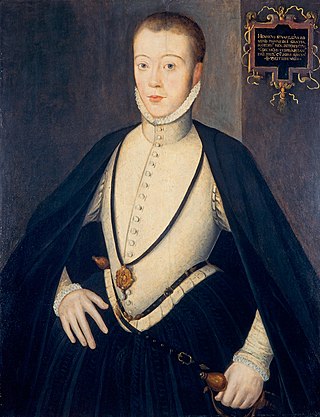
Henry Stuart, Lord Darnley, was the second husband of Mary, Queen of Scots, and the father of James VI of Scotland and I of England. Through his parents, he had claims to both the Scottish and English thrones, and from his marriage in 1565 he was king consort of Scotland. Less than a year after the birth of his son, Darnley was murdered at Kirk o' Field in 1567. Many contemporary narratives describing his life and death refer to him as simply Lord Darnley, his title as heir apparent to the Earldom of Lennox.
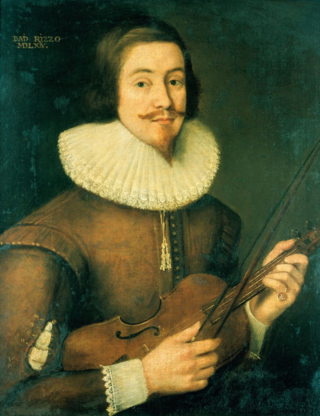
David Rizzio or Riccio was an Italian courtier, born in Pancalieri close to Turin, a descendant of an ancient and noble family still living in Piedmont, the Riccio Counts di San Paolo e Solbrito, who rose to become the private secretary of Mary, Queen of Scots. Mary's husband, Lord Darnley, is said to have been jealous of their friendship because of rumours that Rizzio had impregnated Mary, and he joined in a conspiracy of Protestant nobles to murder him, led by Patrick Ruthven, 3rd Lord Ruthven. Mary was having dinner with Rizzio and a few ladies-in-waiting when Darnley joined them, accused his wife of adultery and then had a group murder Rizzio, who was hiding behind Mary. Mary was held at gunpoint and Rizzio was stabbed numerous times. His body took 57 dagger wounds. The murder was the catalyst of the downfall of Darnley, and had serious consequences for Mary's subsequent reign.

Wemyss Castle is situated in Wemyss on the sea cliffs between the villages of East Wemyss and West Wemyss in Fife, Scotland. Wemyss Castle is considered to be a multi-period building, and today's castle includes many elements from former periods such as the 15th century tower and the 19th century stables and gatepiers.
Lord Darnley is a noble title associated with a Scottish Lordship of Parliament, first created in 1356 for the family of Stewart of Darnley and tracing a descent to the Dukedom of Richmond in England. The title's name refers to Darnley in Scotland. Outside the Peerage of Scotland, another Earldom of Darnley was created in the Peerage of Ireland in 1729.
Archibald Campbell, 5th Earl of Argyll was a Scottish nobleman, peer, and politician. He was one of the leading figures in the politics of Scotland during the reign of Mary, Queen of Scots, and the early part of that of James VI.
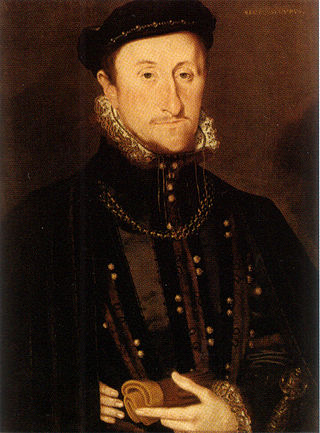
James Stewart, 1st Earl of Moray was a member of the House of Stewart as the illegitimate son of King James V of Scotland. At times a supporter of his half-sister Mary, Queen of Scots, he was the regent of Scotland for his half-nephew, the infant King James VI, from 1567 until his assassination in 1570. He was the first head of government to be assassinated with a firearm.
John Stewart, 4th Earl of Atholl, called the Fair, was a Scottish nobleman and courtier. He was favoured by Mary, Queen of Scots, but later turned against her.

Mary of Scotland is a 1936 American historical drama film starring Katharine Hepburn as the 16th-century ruler Mary, Queen of Scots. Directed by John Ford, it is an adaptation of the 1933 Maxwell Anderson play, with Fredric March reprising the role of Bothwell, which he also performed on stage during the run of play. The screenplay was written by Dudley Nichols. Ginger Rogers wanted to play this role and made a screen test, but RKO rejected her request to be cast in the part feeling that the role was not suitable to her image.
Sir James Sempill (1566–1626) was a Scottish courtier and diplomat.
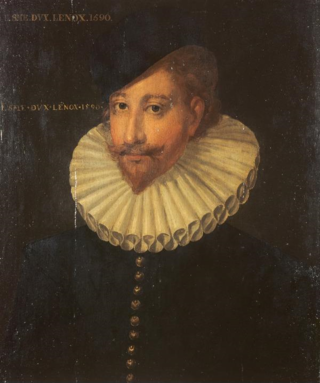
Esmé Stewart, 1st Duke of Lennox, 1st Earl of Lennox, 6th Seigneur d'Aubigny of the Château d'Aubigny at Aubigny-sur-Nère in the ancient province of Berry, France, was a Catholic French nobleman of Scottish ancestry who on his move to Scotland at the age of 37 became a favourite of the 13-year-old King James VI of Scotland. Esmé Stewart was the first cousin of James' father, Henry Stewart, Lord Darnley. Despite his conversion to Calvinism he was never trusted by the Scots and returned to France where he ended his days. Sir James Melville described him as "of nature upright, just and gentle". He was the first to popularise the firstname Esmé in the British Isles.
Patrick Ruthven, 3rd Lord Ruthven played an important part in the political intrigues of 16th century Scotland. He succeeded to the lordship in December 1552. The Ruthven lordship encompassed the offices of Provost and Constable of Perth, and Sheriff of Strathearn.
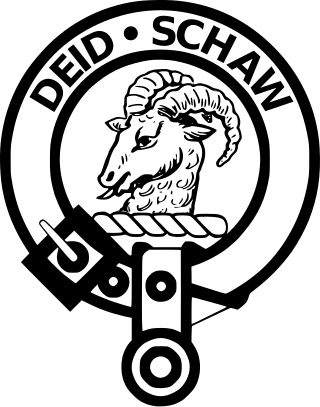
The Clan Ruthven is a Lowland Scottish clan.
William Ruthven, 1st Earl of Gowrie, 4th Lord of Ruthven was a Scottish peer known for devising the Raid of Ruthven.
The Battle of Carberry Hill took place on 15 June 1567, near Musselburgh, East Lothian, a few miles east of Edinburgh, Scotland. A number of Scottish lords objected to the rule of Mary, Queen of Scots, after she had married the Earl of Bothwell, who was widely believed to have murdered her previous husband Lord Darnley. The Lords were intent to avenge Darnley's death. However, Bothwell escaped from the stand-off at Carberry while Queen Mary surrendered. Mary abdicated, escaped from prison, and was defeated at the battle of Langside. She went to exile in England while her supporters continued a civil war in Scotland.
James Ross, 4th Lord Ross of Halkhead was a Scottish nobleman and an adherent to the cause of Mary, Queen of Scots.

The Ainslie Tavern Bond was a document signed on about 20 April 1567 by a number of Scottish bishops and nobles. The bond approved the Earl of Bothwell's acquittal on 12 April of implication in the murder of Lord Darnley, recommended him as an appropriate husband for Mary, Queen of Scots, and pledged to assist in defending such a marriage.
Patrick Lindsay, 6th Lord Lindsay of the Byres, (1521–1589), Scottish courtier and Confederate lord.
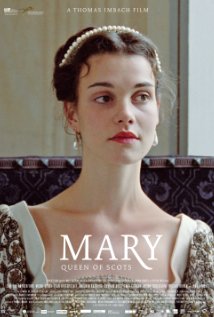
Mary Queen of Scots is a 2013 Swiss period drama directed and co-written by Thomas Imbach. It is his first film in the English and French languages, starring the bilingual French actress Camille Rutherford. The film portrays the inner life of Mary, the Queen of Scotland. The film is based on the Austrian novelist Stefan Zweig's 1935 biography, Mary Stuart, a long-term bestseller in Germany and France but out of print in the UK and the US for decades until 2010. The film was first screened at the 2013 International Film Festival Locarno and was later shown at the 2013 Toronto International Film Festival.

Mary, Queen of Scots, and Henry Stuart, Lord Darnley, were married at the Palace of Holyroodhouse on 29 July 1565, when she was 22 years old, and he was 19.